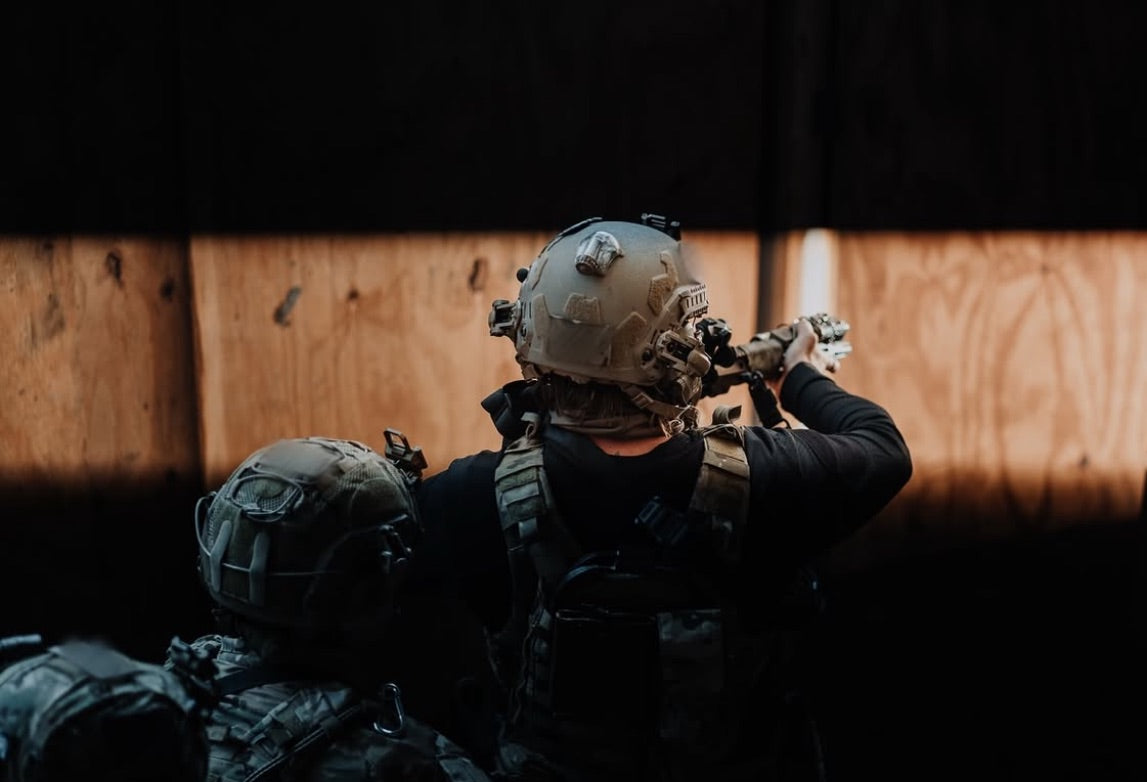
Blue / Green has both a Phase 1 and Phase 2 SFAS Advanced Training program (and a bundle with both) designed by our PhDs and Green Beret's. Not every athlete should start in the same spot.
Special Forces Assessment and Selection (SFAS) is hard. That is no surprise. But what often gets overlooked is how physically demanding the preparation can be, even before Day 0 ever begins.
SFAS Advanced Phase 1 is for those who are committed to earning their spot in the Special Forces Qualification Course (SFQC), but recognize they are not quite ready for the intense 12-week lead-up to SFAS (that is seen in our Phase 2 guide). That is not a weakness. It is a smart decision to start here. Whether you are training for SFAS, SFRE, or SFE, your training is the same.
If you begin an intensive training program like Phase 2 before your body is ready, you risk falling short. Your ability to handle high-volume, high-intensity training depends on your current fitness level. Phase 1 is designed to improve that capacity so you can train harder, recover faster, and make real progress in the advanced work that follows. Even if you feel eager to jump ahead, trust that this phase will increase your chances of long-term success.
Phase 1 is focused on building your foundation. Over 10 weeks, you will improve your work capacity, running and rucking ability, strength, movement quality, and overall durability. The goal is straightforward. Prepare your body and mind for the more advanced training to come.
This is not just preparation for the sake of it. It is the first step in a deliberate, two-phase process. Phase 2 will get you ready for SFAS. Phase 1 prepares you to succeed in Phase 2.
If you are training for an SFE or SFRE, follow this same path. Treat that event like it is SFAS. That is your first goal on the path towards earning your Green Beret. We may only refer to you prepping for SFAS throughout the guide but be confident that prep is the same.
What to Expect in Phase 1:
This program includes a 10-week training plan designed to improve your baseline fitness. You will complete four workouts each week in addition to your unit PT, or alongside another program if you are not doing PT daily. This Phase 1 program alone isn’t enough. By the end of these 10 weeks, most athletes will be ready to begin Phase 2.
To know if you are ready to move on, ask yourself if, under ideal conditions, could you pass (or come close to passing) the physical events listed below. If the answer is yes, you are likely ready for Phase 2. If not, you should repeat this program.
Here are the physical events to consider:
· SFAS PT test – 48 hand-release push-ups (ACFT style), 3:00 plank, 14 pull-ups, 13:30 2-mile
· Run 5-miles in 40:00 or faster
· Farmer’s Carry 50-pound dumbbells for 200 meters without stopping and without running
· 12-mile ruck on a flat surface with a 45-pound pack, completed in around 3 hours
· Continuously move, slowly, with a 50-pound ruck for 2 hours without stopping
With a solid foundation in place, you will be able to train at the higher intensity and frequency required to meet the challenges ahead.
If you can meet those physical demands listed above, you don't need Phase 1. You can start Phase 2 once you are 12 weeks out from your SFAS / SFRE / SFE start date. If you cannot yet meet these demands, start with Phase 1.
What Comes Next - Phase 2:
After Phase 1 is our Phase 2 guide. It is a more demanding 12-week plan designed to prepare you for the specific physical challenges of SFAS. Research in exercise science supports this approach - the closer you are to your report date (or whatever you are training for), the more targeted your training should be. This program includes weekly workouts and detailed guidance on nutrition, recovery, and mental performance. Each element is designed to help you succeed. It is intended to be followed in the 12 weeks directly before you report.
Why Keep Training If You Are Already Close to the Standard?
The reality is that SFAS isn’t conducted under ideal conditions. You may be dealing with poor sleep, an MRE only diet, constant stress, and daily physical demands. Passing individual SFAS events after a full night’s rest, a normal diet, and low stress isn’t the same as passing those demands while at your SFAS / SFE / SFRE.
More importantly, the first week of SFAS (gate week), is only the start of it. The full course is about 3 weeks, and the demands do not let up. You need more than test-day fitness. You need the durability to perform day after day in harsh conditions.
That is what Phase 2 is designed to build. But to take full advantage of it, you first need the foundation. That is the purpose of Phase 1. This guide exists to prepare you for what comes next.
The graphic below shows how your fitness is expected to progress across both phases.

--
The appearance of U.S. Department of Defense (DoD) visual information does not imply or constitute DoD endorsement.
--
Blue / Green Training designs comprehensive fitness guides for military athletes. Our goal is to enable success and capture potential. Our guides include carefully designed fitness programming and explanations to help our athletes understand the concepts behind it all - something we haven't seen anywhere else. We inspire confidence in our athletes by teaching them effective physical training so they can continue their progress after our programming ends. We guarantee you'll get value from our material.
Blog related to : SFAS, Special Forces, Special Forces Assessment and Selection, SFQC, Green Beret
